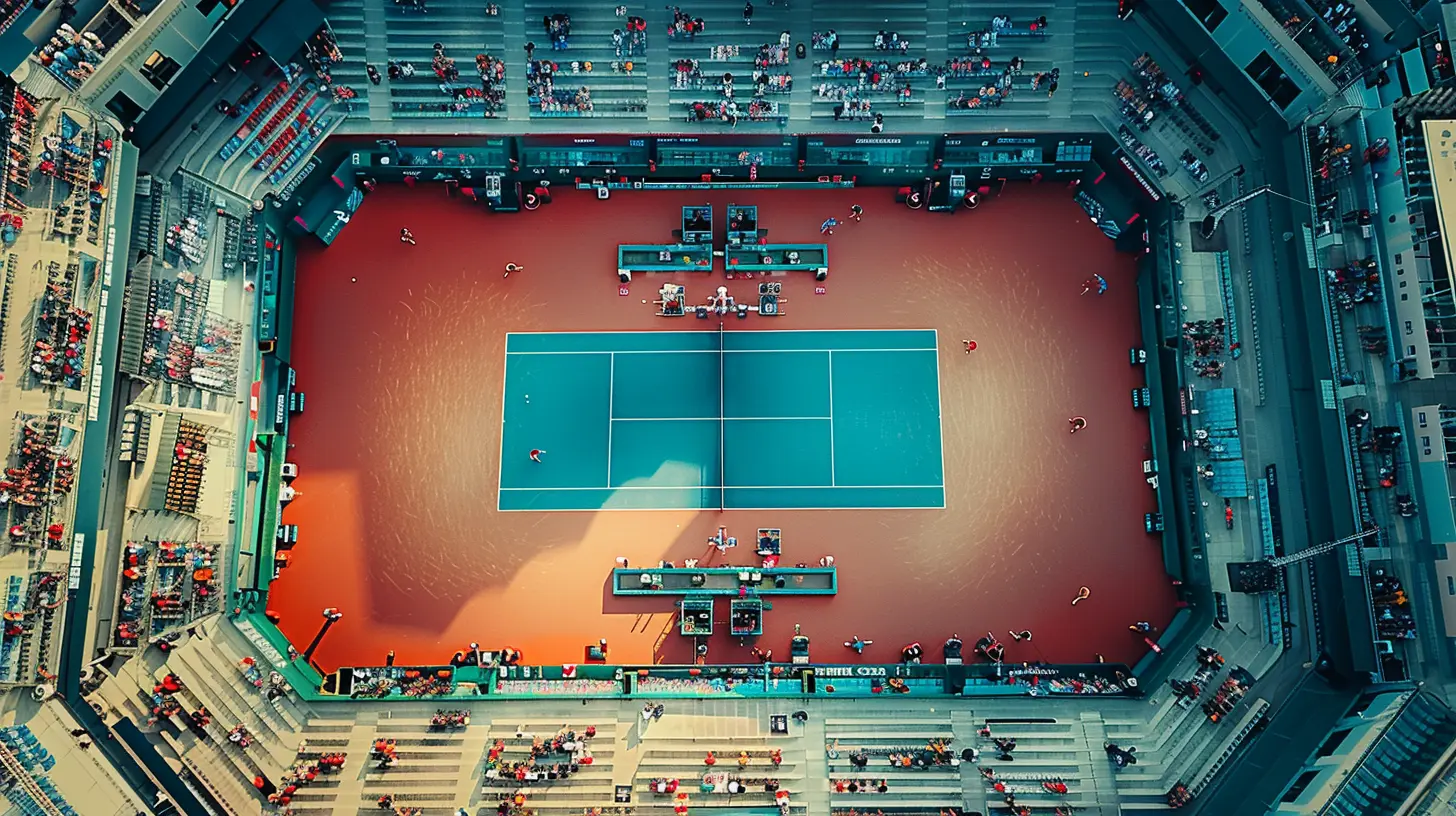The Role of Analytics in Modern Tennis Strategy
13 November 2025
In today’s tennis world, raw talent alone doesn’t guarantee success. While natural athleticism and killer instincts still matter, top players and coaches are now relying on something much more precise — analytics.
Yep, we’re talking about data. Cold, hard numbers are quietly transforming the game we love. From player performance to match tactics, analytics has crept its way into every corner of the court.
But what does that actually mean? How does a bunch of stats impact what happens on the court? That’s exactly what we’re going to dive into.

What Exactly Is Tennis Analytics?
First, let’s break it down.Tennis analytics is the process of collecting and analyzing data from matches, training sessions, or even practice drills to gain insights that help players perform better. This can be anything from where a player likes to serve on break point to how often they hit a crosscourt forehand in long rallies.
Sounds a bit like something from a tech startup, right? That’s because it is. Sports, including tennis, are catching up with Silicon Valley — and fast.

Why Analytics Is Gaining Traction in Tennis
Let’s face it: tennis is changing. It’s faster. It’s smarter. It’s more competitive than ever before. The margins between winning and losing are razor-thin, often just a single point.Players and coaches are always looking for that extra edge — and analytics is giving it to them.
Think about it. If knowing your opponent’s tendencies gives you even a one-percent edge, that could be the difference between going home early or lifting the trophy.

Real-Time Data: The Game-Changer
One of the coolest parts of using analytics in tennis is the ability to use real-time data. With devices like Hawk-Eye and smart sensors embedded in rackets, coaches and players can analyze serve speeds, spin rates, shot placement, and so much more — literally while the match is still going on.Want to know Nadal’s forehand spin rate on a clay court? Or how often Djokovic hits down the T on the ad side during tiebreaks? That info is now just a few clicks away.
It’s like having a cheat code — except it’s legal.

Key Areas Where Analytics Influence Tennis Strategy
Let’s zero in on how this actually plays out in real-life tennis. Here are a few strategic areas where analytics is making a major impact.1. Serve Patterns and Placement
In the past, players just went with their “gut feeling” or what “felt right.” Now? They’re armed with data on serve direction, speed, and success rates.Take Federer, for instance. When you study his serve data, you see he often uses the wide serve on deuce court to pull opponents off the court — not just at random, but at specific pressure points.
Coaches analyze patterns to figure out which serve works best against which opponent — tailoring strategy like a custom-made suit.
2. Shot Selection and Rally Construction
Imagine knowing exactly what kind of shot sequence gives you the best chance to win a point. Analytics provides that insight.Let’s say a player wins 70% of points when hitting a backhand slice followed by a forehand approach. That’s not guesswork — that’s strategy backed by data.
Players can now build rallies the same way a chess master sets up a checkmate — with purpose and precision.
3. Opponent Weaknesses and Tendencies
Here’s where things get really interesting.Data analysts can break down an opponent's entire game — slice it up like a pie chart and find the soft spots. Maybe they're weak on high backhands, or they struggle with short-angle forehands.
With analytics, players aren't just preparing for a match; they’re preparing a complete battle plan.
4. Physical Load and Injury Prevention
Analytics isn’t just about points and percentages — it's also crucial for managing a player's body.Using wearables and performance tracking tools, teams can monitor physical exertion, recovery stats, and even detect fatigue before it leads to an injury.
It's like having a pit crew for the human body.
5. Mental and Emotional Analysis
Yep, even the mental game is getting crunched by numbers.Players like Novak Djokovic and Iga Świątek use mental performance data to identify patterns in focus, stress levels, and even emotional triggers. This helps them stay mentally sharp under pressure.
A cool head is sometimes more powerful than a booming serve.
The Rise of Performance Analytics Teams
It’s not just players and coaches anymore. Many top pros now bring entire analytics teams on board. This includes data scientists, video analysts, and performance coaches — all working behind the scenes to deliver customized insights.These teams dissect every match, track stats, and develop game plans tailored to upcoming opponents. It's like bringing a mini NASA team on tour.
Case Studies: Analytics in Action
Let’s highlight some real-life examples to see how analytics has changed the game for top players.Novak Djokovic
Djokovic’s team has invested heavily in analytics. His strategy often revolves around reading patterns, especially return positions. By studying serve directions and opponent movement, he’s able to anticipate like a chess grandmaster — always two steps ahead.His analysts also help with recovery planning by monitoring workload data — reducing burnout across long tournaments like the Grand Slams.
Serena Williams
During her peak years, Serena’s team used data to understand her own serve performance — especially on second serves. By uncovering when and where she was most vulnerable, she made key adjustments that helped her tighten up her game and dominate even more.Jannik Sinner and the New Generation
You know what sets the new-gen stars apart? They’re growing up with analytics baked right into their training. Players like Jannik Sinner, Carlos Alcaraz, and Coco Gauff are being coached with data from the get-go — giving them insights their predecessors never dreamed of.It’s like learning to drive with GPS instead of a paper map.
Tools Powering the Data Revolution
Now, you might be wondering — how do they actually gather all this data?Here are a few of the most popular tech tools in the tennis analytics arsenal:
- Hawk-Eye: Tracks ball movement, bounce, trajectory — used for line calls and more.
- Tennis Analytics Software: Apps like Dartfish or SwingVision help break down match videos and tag patterns.
- Wearables: Smartwatches, sensors like Zepp or Babolat Play record player movement, power, and even stress load.
- Video Match Analysis: Used to track movement efficiency, decision-making, and shot placement tendencies.
It’s like Moneyball — but for tennis.
Challenges and Limitations of Tennis Analytics
Alright, let’s not get carried away. Data isn’t a magic wand.There are challenges too:
- Overreliance: Relying solely on data can remove instinct and creativity from the game. Tennis is still an art.
- Data Overload: Too much information can lead to “paralysis by analysis.” Players need to know what to ignore.
- Accessibility: Not every player or coach can afford analytics tools — creating a tech gap between elite and amateur levels.
- Privacy Concerns: With wearables and constant tracking, players are starting to raise questions about how their data is used or stored.
So, while analytics is powerful, it needs to be handled wisely — more like a scalpel than a hammer.
The Future of Analytics in Tennis
We’re just scratching the surface. The future? It’s going to be wild.Imagine AI coaches analyzing live match footage and suggesting strategies mid-match. Or virtual reality training sessions powered by simulation data.
Even fans might get in on the action — with augmented reality that shows live player stats and heat maps during matches.
Analytics is going from the shadows to center stage — and tennis will never be the same.
Final Thoughts
Analytics isn't replacing the human element of tennis — it's enhancing it.The beauty of the game still lies in the drama, the emotion, the spontaneous brilliance. But now, players also have science in their corner.
Data is the new doubles partner — quiet, reliable, always ready with the right call. As long as players don’t lose their instincts and creativity, analytics can help bring out their very best.
So next time you're watching a match and wondering why a player chose a particular shot or serve, remember — there might be data behind that decision.
And in modern tennis, smart beats lucky. Every single time.
all images in this post were generated using AI tools
Category:
TennisAuthor:

Umberto Flores

